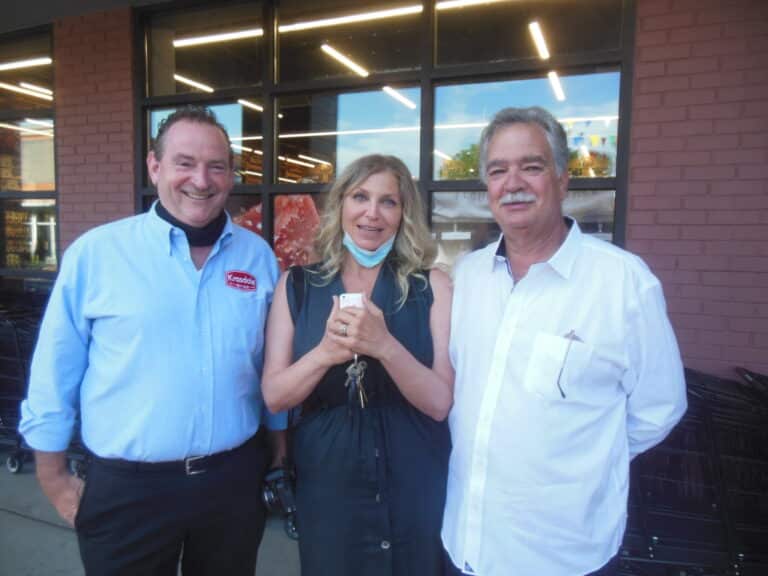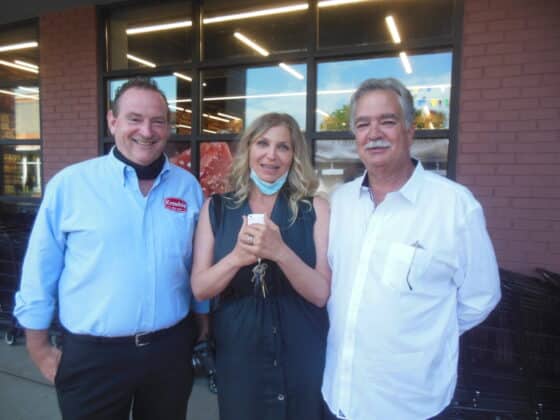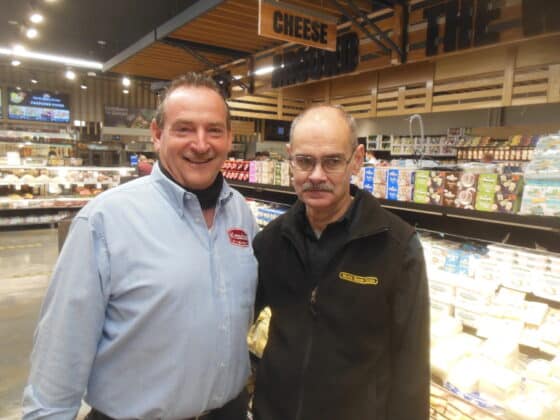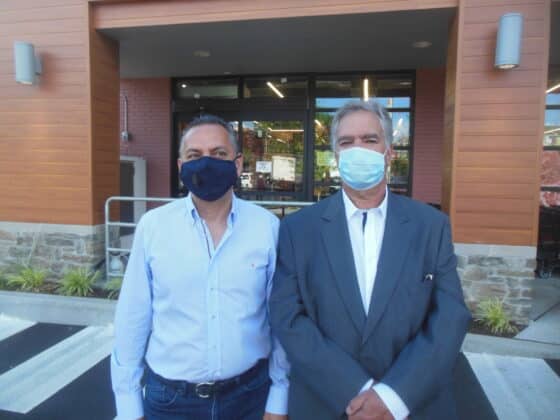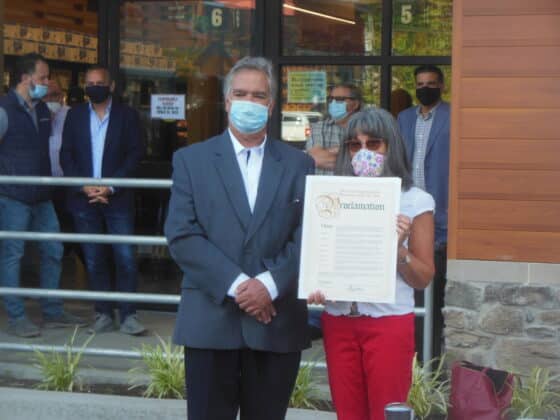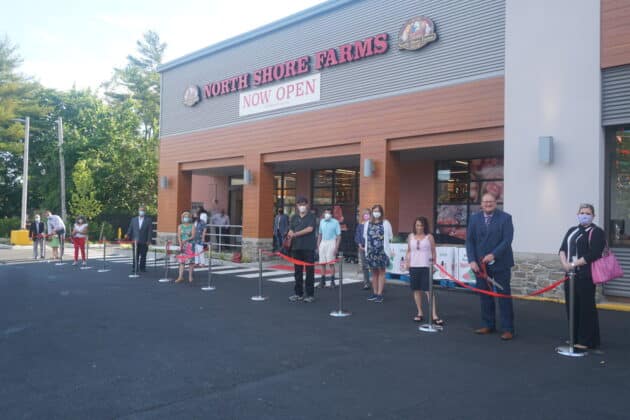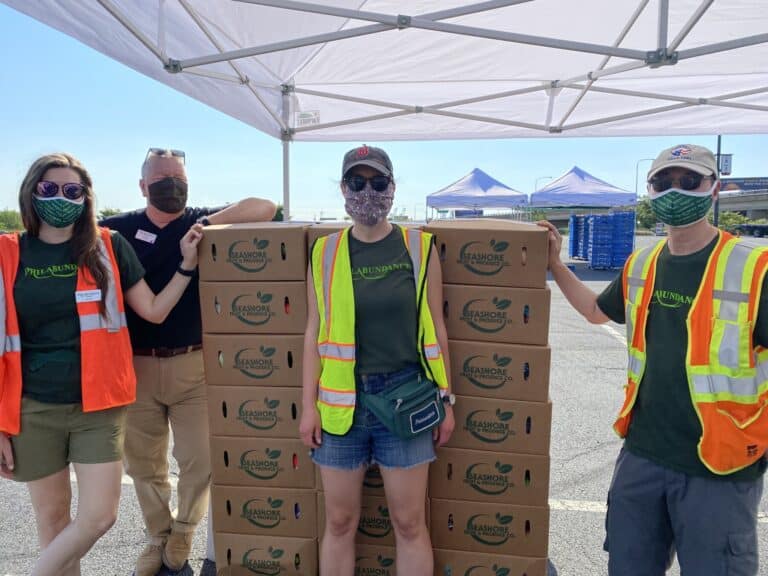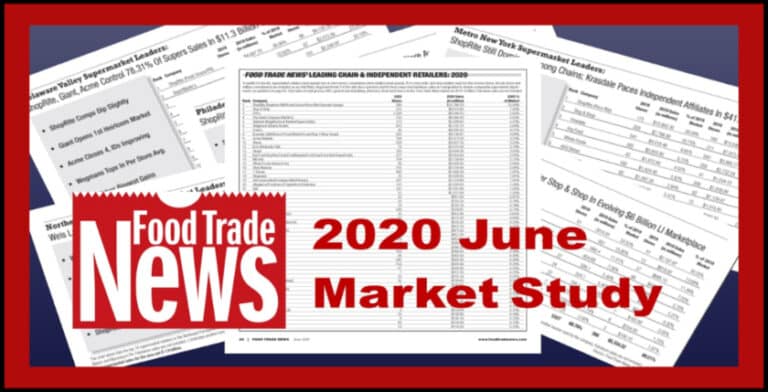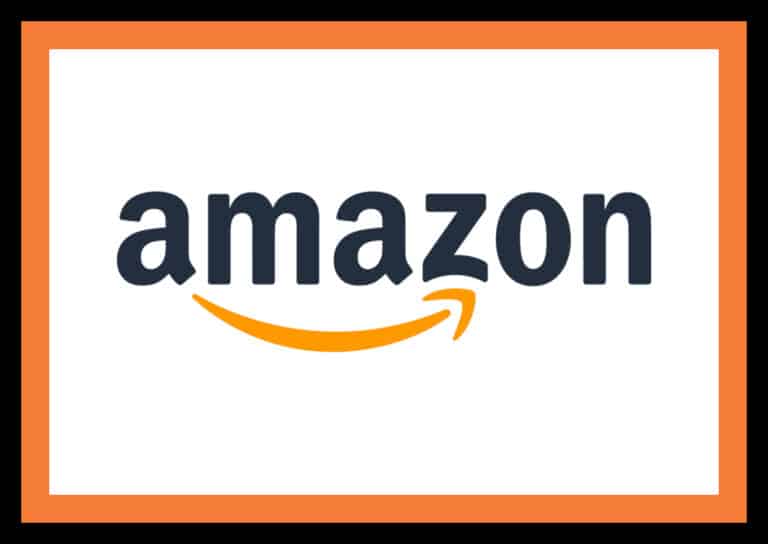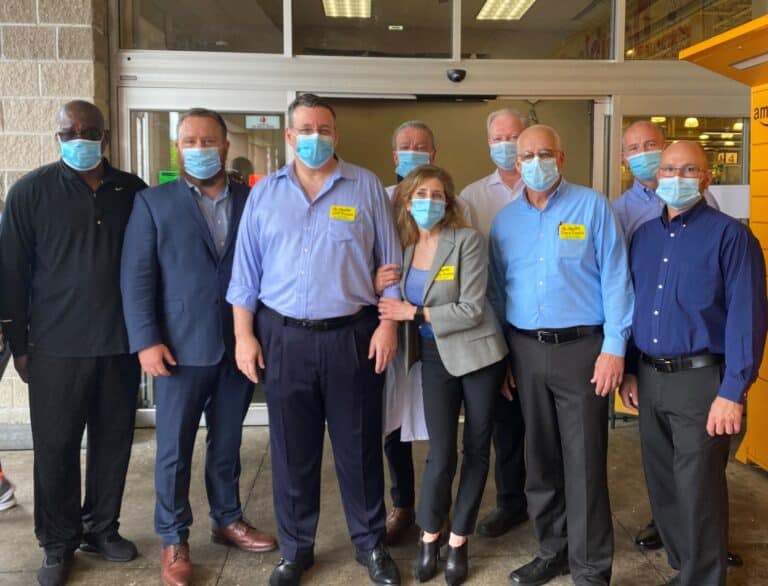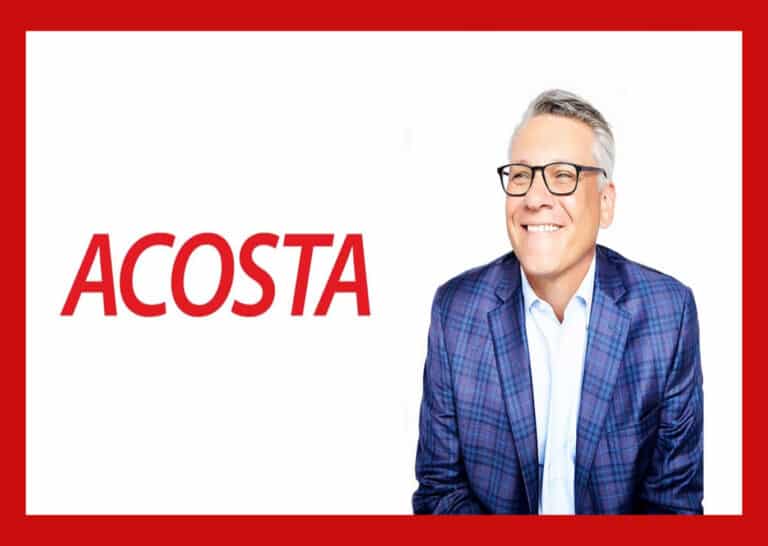Food Trade News
Kroger Names Aitken Chief Merchant; Promotes Cosset To Head 84.51º Unit
Stuart Aitken has been named Kroger’s new chief merchant and marketing officer effective August 15. Aitken currently serves the big chain as senior VP and alternative business and CEO of its data analytics business 84.51º. He will replace Joe Grieshaber who will be retiring next month after 37 years with Kroger.
Moving into Aitken’s former slot will be Yael Cosset, the Cincinnati-based retailer’s current senior VP and chief information officer (CIO).
“Today’s leadership announcements are consistent with our positive track record of strong succession planning and will help us to continue to drive transformation of our business and culture, focusing on speed, action and agility to deliver value for our customers and shareholders,” said Rodney McMullen, Kroger’s chairman and CEO. “We are greatly appreciative of the unique talents and contributions that each of these leaders has provided to Kroger to create a best-in-class experience for our associates and customers.”
Aitken will be responsible for sales, pricing, planning, promotions, execution, analytics, ecommerce and digital merchandising, and Our Brands. He will also retain responsibility for marketing.
“Stuart’s outstanding leadership and deep history of putting the customer first through data-driven decisions and personalization will further transform our business for growth,” stated McMullen. “Bringing together merchandising and marketing under one leader will strengthen our brand promise of Fresh for Everyone.”
Aitken was named a group VP five years ago and has led 84.51˚ as CEO since its inception in 2015. As the leader of that subsidiary, Aitken played a critical role in integrating data-based decision making into Kroger’s merchandising organization. 84.51° combines customer data, predictive analytics and marketing strategies to drive business decisions, sales growth and customer loyalty using a sophisticated, proprietary suite of tools for Kroger and more than 300 consumer-packaged-goods companies in the U.S.
In January 2019, Aitken was promoted to senior VP of alternative business, tasked with managing several groups, including 84.51°, Kroger Precision Marketing and Kroger Personal Finance. As head of marketing as well, Aitken guided the company through its Fresh for Everyone brand transformation campaign in November 2019.
Prior to joining Kroger, he acquired many years of marketing, academic and technical experience across a variety of industries and held various leadership roles with other companies, including Michael’s Stores, Safeway, Inc. and dunnhumby USA, where he served as CEO from 2009 to 2015.
Originally from Scotland, Aitken holds a bachelor’s degree with distinction from Queen Margaret University and a master’s degree in information management from the University of Strathclyde. He serves on the boards of InvenTrust Properties Corp. and the Food Marketing Institute. Aitken is also a member of the Cincinnati Business Advisory Council for the Federal Reserve Bank of Cleveland.
Yael Cosset will assume responsibility for the alternative profit business portfolio and 84.51°, effective August 1. Cosset will continue to lead Kroger Technology & Digital.
“Yael will continue to play an essential role in accelerating our grocery-to-growth business model,” said McMullen. “His exemplary leadership, vision and customer-first obsession to make people’s lives easier using technology and data will help us to create more personalized and engaging shopping experiences and drive more trips.”
In January 2017, Cosset was promoted to group VP and chief digital officer, where he led the company’s overall digital growth strategy, ecommerce expansion and Vitacost business. He was named senior VP and CIO in May 2019, assuming responsibility for Kroger Technology and blending two talented teams to form Kroger Technology & Digital. Previously, he served as chief commercial officer and chief information officer of 84.51°.
Prior to Kroger, he held several leadership roles at dunnhumby, including executive VP of consumer markets, global chief information officer and CEO of KSS Retail – an enterprise software company.
Cosset has been a member of the 84.51° advisory board for the last three years, helping shape the business’s strategy and direction. In February 2020, Cosset was appointed to the Kohl’s Corporation board of directors.
Originally from France, Cosset graduated from the Classes Preparatoires aux Grandes Ecoles with a major in mathematics and earned a master’s degree from the Graduate Business School – Ecole Supèrieure de Commerce de Chambéry.
As for the retiring Grieshaber, he began his career with Kroger in 1983 as a store management trainee in Nashville, TN. Since then, he has served in numerous roles, including as a meat merchandiser and district manager for the Michigan division. Later in his career, Grieshaber was promoted to VP of merchandising of the Columbus division then assumed the role of corporate group VP of perishables merchandising and procurement. He was named president of the Dillons division in 2010 and served as president of both the Columbus and Fred Meyer divisions before being promoted to his current role in 2019.
“We thank Joe for his 37 years of service, leading with excellence by developing and uplifting associates and creating and executing innovative, results-oriented strategies,” said McMullen. “He’s been instrumental to Kroger as an accomplished leader with a passion for people and results, and we wish him all the best in retirement.”
Philabundance Drive-Through Distribution Of Perishables
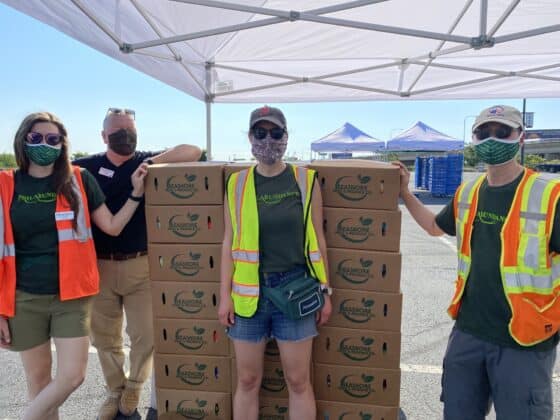
Safeway/Eastern, Acme To Merge HQ To Create Mid-Atlantic Division
Two Albertsons divisions – Safeway/Eastern and Acme Markets – will be merging their headquarter functions, effective in the retailer’s third quarter which begins on September 13. Currently, Safeway’s Eastern division is based in Lanham, MD and Acme is based in Malvern, PA, a distance of approximately 120 miles.
The decision to unify the two divisions, which will now be called Albertsons’ Mid-Atlantic division, is expected to offer greater efficiency and provide a stronger platform for growth.
The Mid-Atlantic division, which will be headquartered in Malvern, will now encompass 275 supermarkets that range from Fairfield County, CT to Culpeper County, VA. Annual sales for those stores are approximately $6 billion.
The merger will make the Mid-Atlantic division Albertsons’ third largest in terms of store count behind Southern California and Northern California.
In the new alignment, Jim Perkins, currently Acme’s president (and executive VP of Albertsons), will become president of the Mid-Atlantic division, and current Safeway-Eastern president Tom Lofland will serve as senior VP-marketing and merchandising.
In 2017, Perkins, who first joined Albertsons in 1982, oversaw both the Safeway-Eastern and Acme divisions. Lofland, who was named president of Safeway-Eastern in 2018, began his industry career with Albertsons in 1990.
The company is not expected to release a new organizational chart until all interested associates complete (by July 14) a career interest survey. Interviews will follow and it is hoped all personnel will be in place by late August or early September.
Although Albertsons said that 95 associates will be impacted by the consolidation, it is expected that the job losses will be substantially fewer. Other associates may be offered different roles from their current ones and some new positions might also be created by the merger. All told, the newly created division should employ approximately 285 associates.
While there will certainly be some potential relocation for those Safeway associates who are offered jobs that will be based in Malvern, Albertsons plans to keep a smaller regional office in the Baltimore-Washington area that would house some operational, merchandising and clerical staff. Albertsons owns the current Safeway-Eastern headquarters building on Forbes Blvd. in Lanham.
The combining of the two headquarters dovetails with an announcement made by Albertsons earlier this year when the big chain said it would shift its warehousing and logistics responsibilities from Safeway’s distribution center in Upper Marlboro, MD to Acme’s larger mechanized depot in Denver, PA, near Lancaster (like its divisional offices in Lanham, Albertsons also owns the Safeway DC in Upper Marlboro).
That changeover is nearly complete and with slow moving items (now supplied by C&S from its Bethlehem, PA facility) scheduled to be moved into Denver by the end of the month and Burris Logistics ready to handle Safeway’s frozen business (it has supervised Acme’s frozen distribution for many years), the merging of warehouses will soon be complete. Albertsons also owns its own dairy plant in the eastern PA market, the former Rosenberger’s facility in Hatfield.
“As a company that’s done business with both Acme and Safeway for many years, we have wondered for quite a while when this move was coming,” said the president of a food brokerage company based in the Philadelphia area. “When Albertsons decided to consolidate its distribution centers it made this move the logical next step. I believe that there’s strength in numbers and this consolidation will hopefully make both chains better.” Jim Perkins is a strong leader, and from calling directly on him, I know that Tom Lofland’s got the merchandising chops needed.”
COVID Impacts Sales; ShopRite Remains Atop $101 Billion Mkt.
Despite record sales over the past four months, grocery retailers remain concerned about the welfare of their associates and customers, while also worrying about what lies ahead as sales flatten, restaurants slowly begin to reopen and schools will likely be back in session in the next two months. Above it all, they wonder what further adjustments they will have to make if unemployment levels remain at above 10 percent (it was 13.3 percent in May).
The adjustments made by merchants in all channels during the COVID-19 crisis have already been unprecedented, and even with record revenue attained during the month of March, retailers took little joy in their achievements because of the devastating effects of the pandemic, in which more than 2 million people have tested positive in the U.S. resulting in more than 120,000 deaths.
And in the 42 years that Food Trade News has published its annual retail market study, never has there been a more unusual scenario for retailers. For 11 of the 12 months of our measuring period (April 1, 2019-March 31, 2020) retailers were having a marginally good year when viewed over a five-year period.
Same store sales during the April-February period typically ranged from positive 0.5 percent to 1.5 percent, with partial help coming from slight inflation. Events changed dramatically beginning in early March as the coronavirus started to rapidly spread and most states began issuing “stay at home” mandates. Essential business such as food stores remained open and panic buying quickly ensued. Many retailers said that for a two-week period in mid-March, their sales had more than doubled.
So, what did that do to our numbers? Quite a bit. With schools and restaurants closed, grocery merchants in all channels benefited greatly, both in the physical stores and online. We polled more than 30 retailers in the Mid-Atlantic and Northeast regions, and we believe on average that retailer same store revenue jumped about 40 percent during March. With that gain counted as one-twelfth of their annual sales, we believe that most retailers’ annual revenue gain was between 4 and 5 percent (our survey breaks out each retailer’s volume individually).
After our market study measuring period ended, most retailers continued to enjoy solid same store sales increases, but not nearly at the level of March’s.
Our annual retail market survey measures sales for the 12-month period ended March 31, 2020 and covers a 70-county territory ranging from Litchfield County, CT to Cape May County, NJ on a north-south plane and from New Haven County, CT to Franklin County, PA on an east-west plane.
Here’s the breakout of the top 10 retailers in the Mid-Atlantic market.
For the 35th consecutive year, ShopRite and its sister banners (Price Rite, Fresh Grocer, Gourmet Garage and Dearborn Market) continued to dominate the landscape in the $101.4 billion 70-county region. Over the past 12 months, ShopRite added to its already hefty store base by acquiring a new banner (Gourmet Garage) and adding its 51st member, Nicholas Markets, owned-by the Maniaci family whose four northern New Jersey stores are operating as Fresh Grocers. All told, the Keasbey, NJ-based firm operated 280 stores in the region and amassed estimated sales of $15,780.5 billion.
Aided by a successful remodeling program at 21 of its Long Island stores and the benefits of COVID-related sales in March, Stop & Shop enjoyed its best sales performance in 15 years. Operating the same 212 stores as last year, Stoppie rang up revenue of $8.01 billion, an increase of $138 million over 2019.
CVS retained its leadership among drug chains in the market. The Woonsocket, RI-based drug chain now operates 1,233 units in the market with estimated sales of $6.04 billion.
Ranking fourth among all merchants was The Giant Company, which posted strong comp sales both pre-COVID and during last the 31 days of the measuring period. The Carlisle, PA-based merchant added eight new stores to its roster including four Central PA units that were acquired from independent operators Ferguson & Hassler (one store) and Musser’s Markets (three stores). Sales for the 12 months ending March 31, 2020 were $5.53 billion.
Walmart not only did not open a new store this year, it actually closed two units. Still, comp store revenue was at the top end of the market and the Behemoth continues to add more online sales as it continues to reshape its image. The world’s largest retailer did complete an expansion of its former conventional store in Rio Grande, NJ (Cape May County) to a SuperCenter last year. Walmart now operates 173 stores in the region, ringing up extrapolated sales (food, HBC, GM, pharmacy, floral) of $5.3 billion.
Walgreens (Duane Reade) remained the highest per-store volume leader among all drug chains in the market. And this year, it completed the conversion of the nearly 2,000 stores it acquired from Rite Aid two years ago. That deal manifested in the addition of 125 new stores over the past 12 months, which also significantly elevated the Deerfield, IL drug chain’s revenue. Now operating 813 stores in the $10 billion region, Walgreens produced estimated sales of $5.13 billion.
Seventh-ranked Costco didn’t open any new stores during the last year. But the leading club operator in the country continued to produce huge per store volumes (and strong comps) at its 50 stores. Extrapolated sales are estimated at $4.33 billion.
The leading wholesaler serving Metro New York independent retailers (that is not a co-op), Krasdale, again supplied the most stores in the market (565 – mostly in the five boroughs of New York City). Seven of those banners – C-Town, AIM, Bravo, Fine Fare, Market Fresh, Shop Smart and Shop1 – combined to ring up sales of $4.14 billion for the 12-month measuring period.
Acme Markets, part of the Albertsons family of supermarkets, had a solid year, especially so during March, when COVID-impacted sales were at their height. Under the leadership of Jim “The Hillbilly from Philly” Perkins, the regional chain continued to remodel aging stores. Sales increased for the Malvern, PA-based retailer with revenue reaching $3.37 billion at its 156 stores that covered every state in the 70-county region.
Rounding out the top 10 was Wawa, the dominant c-store player in the market and one that continues to grow despite a changing, more competitive landscape. The Wawa, PA-based privately-held company now operates 524 stores in the Food Trade News region, good for $5.27 billion in annual sales.
Other retailers that topped the $1 billion mark in annual sales in the region included BJ’s, Target, Key Food, Rite Aid (the biggest decliner in the study), Whole Foods, Weis Markets, 7-Eleven, Wegmans, ASG, Allegiance/Foodtown, Aldi and Trader Joe’s.
By class of trade, the leaders are: supermarkets – ShopRite/Price Rite/Fresh Grocer (280 stores, $15.78 billion in estimated annual retail sales); clubs – Costco (50 stores, $4.33 billion in estimated extrapolated sales); mass – Walmart (173 stores, $5.3 billion in estimated extrapolated sales); drug – CVS (1,233 stores and $6.04 billion in estimated sales); and convenience stores – Wawa (524 stores and an $3.27 billion in revenue). Additionally, the region’s eight military commissaries rang up annual sales of $90.8 million, the 10th consecutive year of sales declines.
In non-COVID industry news affecting the 77 multi-store retailers doing business in the $101 billion marketing area, Fairway Market’s second bankruptcy in four years was among the biggest stories. The “like no other market” will soon be “like no market” when it disappears, probably by the end of the year. The auction that followed the filing (held virtually because of COVID) found ShopRite (Village Super Markets) snatching up four Manhattan stores, another unit in Mount Vernon, NY, the parking lot of the Harlem store and Fairway’s perishables distribution center in the Bronx. Those stores continue to operate under the Fairway banner. Last summer, Village became the first ShopRite member to operate stores in Manhattan, when it acquired three-store boutique grocer Gourmet Garage. Other Fairway units were acquired by Amazon which picked off two New Jersey Fairway locations – Paramus and Woodland Park – and plans to convert them into its new grocery store prototype, the first of which is slated to open in Woodland Hills, CA later this summer. Key Food member Seven Seas Associates acquired the Fairway unit on Ralph Avenue in Brooklyn.
And speaking of Brooklyn, the long-awaited Wegmans store at the old Brooklyn Navy Yard in the Red Hook section of that populous borough finally opened in October and sales have been very brisk both pre-COVID and during March (with lots of Instacart activity).
Lidl, which acquired family-owned Best Market in January 2019, converted four of those 24 Long Island stores to its discount banner, with more banner changes expected over the next two years. Another deal announced in January 2019 – Stop & Shop’s purchase of 37 King Kullen stores – has collapsed. Both sides jointly walked away from the agreement citing “significant, unforeseen changes in the marketplace mainly brought on by the COVID-19 outbreak.”
In Central PA, the independent group of retailers known as Family Owned Markets restructured the organization, adding Saubel’s to its roster and naming Hickory, NC-based wholesaler MDI as its primary supplier.
Plus, in a sea change of drug activity, Walgreens (Duane Reade) added 125 new stores, most of them former Rite Aid units it acquired in a deal two years ago.
At the executive level, last July Gordon Reid was promoted to president of Stop & Shop, Ahold Delhaize USA’s (ADUSA) largest operating unit. Additionally, Lee Delaney was named CEO of BJ’s(which went public last year as did discounter Grocery Outlet) as former chief executive Chris Baldwin became executive chairman. Earlier this year, Giant/Martin’s, the large ADUSA bran,d changed its name to The Giant Company. The large retailer will continue to be based in Carlisle, PA and operate under the Giant and Martin’s banners.
Viewed as a group, the 77 chains and independents operating in the grocery, club, mass, drug and c-store channels operated 8,797 stores and accrued $99.47 billion in annual sales, good for 98.09 percent of the region’s $101.3 billion food and drug market.
You can access the complete Food Trade News 2020 Market Study here.
Amazon Quietly Adding Sites For New Traditional Grocery Launch
As the trade awaits the debut of Amazon’s new unnamed grocery store concept (likely to debut in Woodland Hills, CA later this year), the country’s fastest growing retailer has been quietly adding locations to its roster that most likely will be utilized as full-service supermarkets. That new concept is expected to differ from the company’s Whole Foods natural and organic model but will include a strong presence in prepared foods and some foodservice components.
In April, at the auction to sell bankrupt Fairway Market’s stores, it was announced that Amazon was the winning bidder for the leases of two New Jersey units in Paramus and Woodland Park. Those stores are expected to open as Amazon grocery stores early next year.
More recently, sources have told us that Amazon will be a tenant at the site of the former Giant store on Easton Road in Warrington, PA in the Creekview Center. Giant closed that 49,000 square foot unit in 2013. The unit was originally a Genuardi’s store that opened in 2001.
Amazon is reportedly leasing nearly 36,000 square feet of that building and could have the store ready by the end of 2020.
Additionally, sources have noted that Amazon will be leasing 41,000 square feet of space in the former Kmart on Street Road in Bensalem, PA (in the Brookwood Shopping Center) that had been reported to be headed to ShopRite retailer Jeff Brown as a replacement unit for his current Bensalem store. The 97,500 square foot Kmart closed in 2017.
There is also talk that Amazon has secured a third Philadelphia-area location in Center City, the location of which has yet to be revealed.
In addition to the potential new Amazon grocery stores in northern New Jersey and eastern Pennsylvania, the company is also reportedly building its supermarket real estate portfolio in the Washington, DC area where new stores could be built in Fairfax and Franconia, VA as well as two in the District of Columbia – Wisconsin Avenue NW and H. Street NW.
JOH Adds Tavalone As Account Executive, Promotes Robillard To AD
JOH recently announced that Joe Tavalone has been named an account executive in its non-foods division. He joins JOH after 26 years with KKM, LLC. During his last 10 years at KKM, Tavalone served as senior vice president of sales responsible for the management of the company’s healthcare segment in the New England area. His primary focus was on CVS where he successfully grew a line of business to $100 million in sales. Previously, Tavalone worked for the A.H. Robins Company as the northeast division manager. He will be reporting to Kevin Tassinari, EVP of non-foods. “We are thrilled to add someone with Joe’s background and experience to our amazing team,” said Tassinari. “He is a seasoned veteran with extensive knowledge of the health and beauty categories and will be a great addition to JOH.”
JOH also announced the promotion of Peter Robillard to associate director of category management.He started with JOH in 2019 as a senior category management analyst. Previously, he was a client manager for Nielsen delivering data-based insights to retail and manufacturing clients. Robillard’s broad experience also includes 10 years in sales and customer development for Colonial Wholesale BeverageCorp. “One year ago, Peter joined our Category Management Team with a deep intellectual passion for data and fact-based selling. Since then, he has organically become a leader amongst his peers,” said Melissa Passalaqua, director of category management. “This new role of associate director was designed to strengthen the team and JOH. We spent time carving out this position for Peter, and we are very excited to see his success and leadership have a positive impact on our team.” In his new role, Robillard will assist in the operational oversight of the category management team.
Risk Management Strategies For Grocery Stores: Protecting Workers And Customers From COVID-19
By Jason Lotter, Scott Dotson, Corey Boles
Since the first cases in the U.S. emerged in early 2020, the COVID-19 pandemic has affected the personal and work lives of individuals across the country. Personal habits, social interactions, travel and business practices have been impacted. Grocers, ranging from single, family-owned stores to nationwide supermarket chains, have continued operations as essential businesses throughout the pandemic and have been forced to answer challenging questions that other businesses are only now having to consider, such as:
- How can we ensure the safety and health of our workers and customers?
- Are certain groups of workers at greater risk of COVID-19?
- Can the implementation of click list services (pickup or delivery) aid in reducing workers’ and customers’ risk of infection?
- How should we respond if there is a reemergence of COVID-19?
Although governmental agencies, such as the CDC, OSHA, and FDA, have developed guidance to assist businesses with a broad range of topics related to COVID-19, these recommendations are often not business-sector specific nor intended to address the challenging questions above. In place of such general recommendations, businesses are actively developing COVID-19 risk management plans, which demonstrate to their customers and workforce that they are responding to COVID-19 with a focus on safety and health.
Developing Risk Management Plans
The COVID-19 pandemic has created a unique situation for grocers, which has required a risk management strategy incorporating a combination of engineering controls, administrative controls and personal protective equipment (PPE). As with any risk management approach, those addressing COVID-19 should be multi-layered and customized to the grocer’s operations. Another important aspect of risk management during COVID-19 for grocers is risk balance. Simply put, grocers should ensure that the risk management plans they implement do not themselves contribute to the unintentional spread of COVID-19 or contribute additional risks to workers and customers.
Considerations for implementation of a multi-layered risk management approaches include:
- Chemical Disinfection – The active ingredients in many disinfectant products are inhalation and dermal hazards and may present risks to not only workers, but to customers as well, if not properly used. Employee training is key to the safe use of disinfectants, as unintentional mixing of certain chemicals can generate hazardous gases, which have resulted in acute health effects or even death. Chemical disinfectants have prescribed contact times, which the amount of time that the chemical must remain on the surface to be effective. For frequently-touched surfaces (e.g., shopping cart handles), grocers should consider a selection of disinfectants with lower contact times or store practices that allow for adequate time between disinfectant application and customer use.
- Alternative Disinfection Technologies – In addition to more established methods, such as use of disinfectants from EPA’s List N: Disinfectants for Use Against SARS-CoV-2 (COVID-19) , grocers may consider incorporation of newer technology (e.g., UV irradiation) with an understanding of their proper uses and limitations. For instance, UV irradiation will not penetrate surfaces and pre-cleaning of dirty surfaces may be required.
- Physical Barriers — The use of transparent barriers (e.g., Plexiglas) can be an effective means to reduce the likelihood of droplet transmission between customers and cashiers. However, installation of barriers should be performed in consultation with a ventilation specialist as these barriers may create unwanted air mixing in areas surrounding cash registers. This may allow for an increase in spread of droplets in these areas if not properly designed.
Another risk management aspect that grocers should take into consideration is the perception of risk associated with the virus, or an individual’s subjective judgment regarding the risk of becoming infected. The perception of risk can differ significantly between individuals. For instance, while many people may already feel safe shopping without the use of facemasks, other individuals may not feel comfortable doing so even long after their use is no longer mandated. Thus, in implementation of risk management strategies for COVID-19, it is important that grocers consider not only how a typical customer feels, but also how the most sensitive or risk averse customer feels.
Risk communications play a vital role in responding to customers’ risk perceptions, as well as building trust in the company and organization among both workers and customers. Just as customers are demanding increased transparency in food preparation and other aspects of their grocery shopping experience, transparency in efforts to control COVID-19 may be a factor for many customers in deciding where to shop. If approached properly, trust can be gained by providing an interactive and ongoing communication strategy in which both workers and customers are active participants. Above all, risk communications should demonstrate a clear commitment from management to prioritize health and safety.
Examples of risk communications for grocers include:
- A risk communication approach that incorporates signage and illustrations within the store about the current risk management strategy
- Grocers leveraging social media to communicate with their customer base by detailing the unique risk management approaches they are implementing
- Communications that are not simply a rebranding of governmental guidelines, but detail the unique strategies being implemented for those operations
Such approaches help instill confidence that the grocer is going above and beyond what is required to protect workers and customers. It also addresses the concern regarding the varying levels of risk perception from person to person. While adequate risk communication helps demonstrate that the grocer is taking the current situation seriously, it also allows the store to remain open and operate efficiently for people who do not perceive the risk of COVID-19 to be high. Therefore, the understanding and incorporation of risk perception and risk communication are vital components of a risk management strategy.
At the time of writing this article, the U.S. is still in the middle of the COVID-19 pandemic, even as our economy begins to reopen. The very idea of ‘return to normal’ has been questioned, given the changes in personal habits and business operations that are likely to remain long after the pandemic has subsided. The health and safety policies implemented by grocers will be added to the list of customer considerations when choosing where and how to shop. To ensure the health and safety of both workers and customers, grocers should develop risk management plans for COVID-19 that are based on informed guidance and are customized to the unique operations of a given store. Importantly, control strategies should be transparent and emphasized by management in order to respond to individuals’ perceptions regarding risk.
Dr. G. Scott Dotson is a senior managing health scientist with Cardno ChemRisk with over 15 years of experience in areas of toxicology, industrial hygiene, risk assessment, and occupational health. Prior to joining Cardno ChemRisk, he was employed by the Centers for Disease Control and Prevention, National Institute for Occupational Safety and Health (NIOSH) as a health scientist for over 10 years.
Mr. Jason Lotter, MS, CIH principal areas of training and expertise include industrial hygiene, exposure and risk assessment, and occupational safety. He has been involved in researching, measuring, and reconstructing exposures, and assessing risks to consumers and workers from a variety of chemicals
Dr. Corey Boles completed his Ph.D. in Occupational and Environmental Health with an emphasis on Industrial Hygiene from The University of Iowa College of Public Health. Dr. Boles’s research focused on developing, evaluating and implementing exposure assessment techniques for occupational and environmental exposure to bioaerosols. Dr. Boles also optimized sampling methodologies for the collection of human norovirus, general bacteria, and influenza A.
Cardno ChemRisk is a globally renowned scientific consulting firm with expertise in evaluating and understanding human health risks, technical capabilities, industry leadership, and a pioneering spirit that is based in San Francisco, CA. It specializes in helping clients characterize occupational, environmental and community health risks associated with complex exposures involving chemicals, pharmaceutical agents, or radionuclides in the environment, the workplace and in consumer goods. For more information about the company, contact Luda Kopelovich, MPH, [email protected], 415.618.3467.
Brown ShopRite Stores Reopen After Looting Incidents
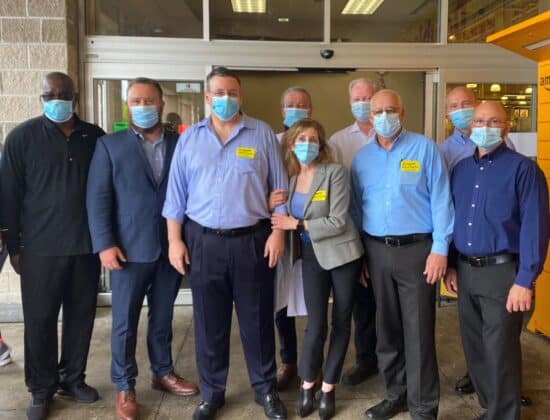
Acosta Names John Carroll Chief Growth Officer
Acosta has announced the appointment of John Carroll as chief growth officer, effective June 15, 2020. In this newly created role, Carroll will be responsible for identifying and harnessing opportunities to drive growth for Acosta’s current and prospective clients and customers. He will report to Acosta’s CEO Darian Pickett and oversee the agency’s business development and e-commerce teams.
“John is a well-known industry leader with a reputation for achieving exceptional results, and we are fortunate to have him join the Acosta team,” said Darian Pickett, CEO of Acosta. “As the path to purchase becomes increasingly digital, manufacturers and retailers need to evolve their go-to-market strategies in order to win. Providing progressive, shopper-based solutions for both online and offline environments is necessary for a merging physical and digital world. In this new role, John will work with our clients and customers to address deeper shopper preferences and evolving digital purchasing habits and deliver joint-value-building programs to maximize growth and future success for Acosta and our brand and retail partners.”
With more than 30 years of experience and success in CPG, food and beverage, and packaging and manufacturing, Carroll has held numerous senior leadership positions in brand, sales, commercial, general management and operations, most recently serving as general manager and vice president of eCommerce for Coca-Cola. In this role, he led the development and overall management of the company’s e-commerce vision and roadmap, including commercial and marketing strategies, customer development and new business models. Since retiring from The Coca-Cola Company more than a year ago, Carroll has been helping companies and brands develop inspiring commerce solutions.
Carroll earned a bachelor of science degree in marketing and communications from Florida State University and a certificate in advanced financial management from Emory University. He is the recipient of several prestigious awards for his work including winner of Best Global Advertising for Sprite and Supplier of The Year for several customers.


